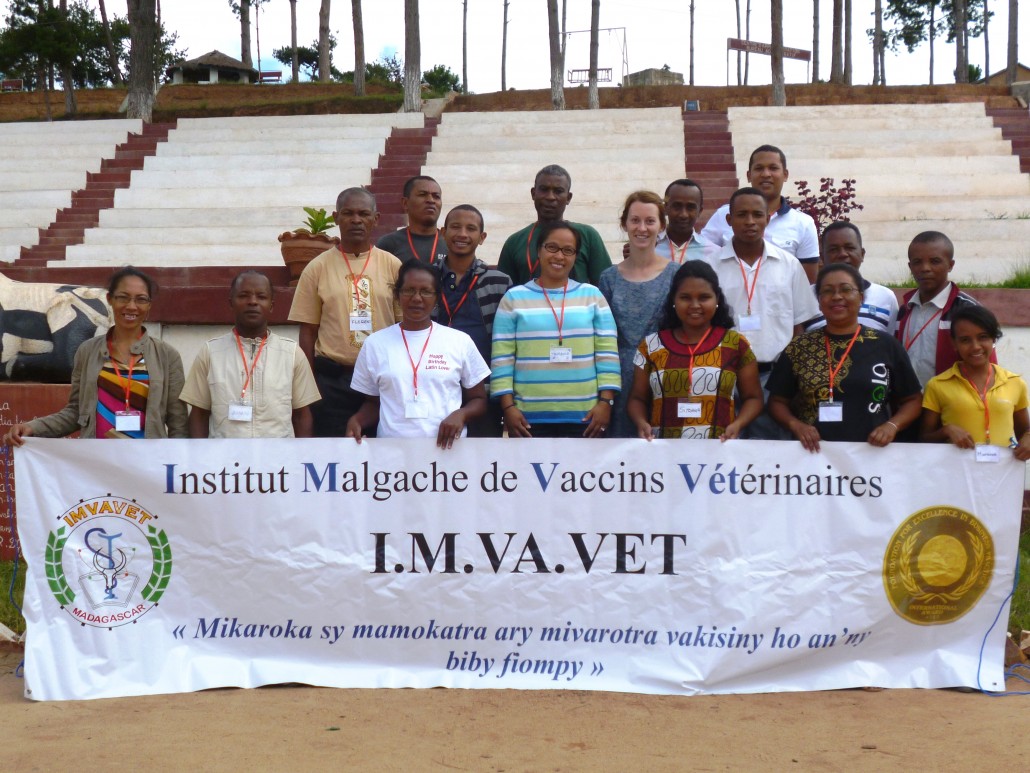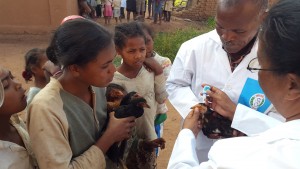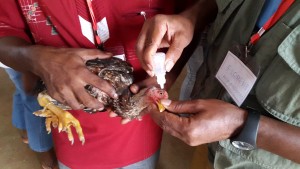A Field Report by Julia De Bruyn, PhD candidate at the University of Sydney
KYEEMA recently joined forces with the San Francisco Zoo and the Wildlife Conservation Society to promote animal and human health in Madagascar. Work in this field focuses on Newcastle Disease control programs that were established in early 2011 in Madagascar, thanks to the financial support of the San Francisco Zoo. Members of the International Rural Poultry Centre of the KYEEMA Foundation have been involved in the program since its inception, providing support for:
- Scoping activities
- Community liaison
- Vaccination production
- Vaccinator training.
This expansion of activities has been in collaboration with the Wildlife Conservation Society and the University of Sydney.
Efforts to improve village chicken production through the control of Newcastle disease (ND) have been underway in many African countries since the introduction of the I-2 vaccine over 15 years ago. Access to this thermotolerant product has opened the door to sustainable ND control in remote and rural areas using trained “community vaccinators”.
Key aims of the ND control work in Madagascar are to strengthen food and nutrition security and reduce the reliance of food-insecure communities on wildlife as a dietary resource. The Makira Protected Area Bushmeat Initiative seeks to address the conflict between nutritional needs of local people and biodiversity conservation, in areas where humans, livestock and wildlife live in close proximity.
In preparation for the first ND vaccination campaign, Mr Amilcar da Silva (Mozambique) coordinated a three-week workshop at the National Veterinary Vaccine Institute in January 2016 to provide technical support for the local production of I-2 vaccine. In February, Dr Julia de Bruyn (Australia) led a “training of trainers” workshop – with the aim of preparing those who will go on to lead similar village-based workshops for community vaccinators.
The three-day training program included an emphasis on building practical skills, providing opportunities for participants to handle and examine chickens, rehearse potential scenarios encountered by vaccinators through role plays, use eye-droppers to administer the I-2 vaccine, and conduct temperature trials to determine effective options for vaccine transport in the field.
With an intended first vaccination campaign in the Makira Protected Area in April, work continues with:
- Prroducing I-2 vaccine
- Establishing distribution procedures
- Training vaccinators
- Raising community awareness of the potential for ND control through vaccination.
There is a great sense of enthusiasm amongst all involved in the program – from international donors to national coordinators to those involved in project implementation and support roles – and strong momentum for the work that lies ahead in 2016.






